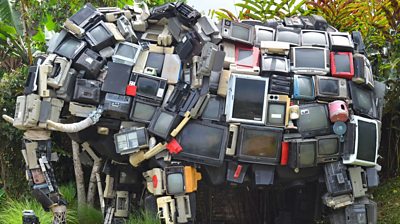
Digital technology and entertainment is a significant driver of electricity use globally, resulting in increased greenhouse gas emissions. Research has been conducted on electricity use associated with digital services, but no complete study of television distribution has been conducted to date.
Here, we present the first assessment of electricity used for distribution and viewing of television over different distribution platforms - terrestrial, satellite, cable and online streaming. We use a novel methodology that combines life cycle assessment techniques with models of the diversity of actual user behaviour, derived from detailed audience monitoring and online behaviour analytics data. This can be applied to assess overall electricity usage for a given media company's services and allows comparison of the electricity demanded per viewer-hour of each distribution platform.
We apply this to a representative national TV provider – the British Broadcasting Corporation (±«Óãtv) – and show the mean estimate for ±«Óãtv distribution and viewing electricity use in 2016 to be 2,000 GWh, resulting in emissions of 1.03 MtCO2e. We show that viewing over streaming, cable and satellite platforms used a mean of 0.150.19 kWh per device-hour (78-98 gCO2e) while terrestrial broadcast used a mean of 0.06 kWh (31 gCO2e). We identify set-top boxes and televisions as key hotspots in the system. We also show that though streaming is similar in impact to cable and satellite, this is due to smaller viewing devices – meaning the networking equipment in and beyond the home has a higher impact than the end device.
The results of this white paper were amended in June 2021 to align with ongoing ±«Óãtv energy modelling and benchmarking. The overall conclusions remain the same.
This paper was written by Daniel Schien, Paul Shabajee and Chris Preist of University of Bristol and Jigna Chandaria, Dan Williams and Chloe Fletcher of ±«Óãtv Research & Development.
White Paper copyright
© ±«Óãtv. All rights reserved. Except as provided below, no part of a White Paper may be reproduced in any material form (including photocopying or storing it in any medium by electronic means) without the prior written permission of ±«Óãtv Research except in accordance with the provisions of the (UK) Copyright, Designs and Patents Act 1988.
The ±«Óãtv grants permission to individuals and organisations to make copies of any White Paper as a complete document (including the copyright notice) for their own internal use. No copies may be published, distributed or made available to third parties whether by paper, electronic or other means without the ±«Óãtv's prior written permission.

